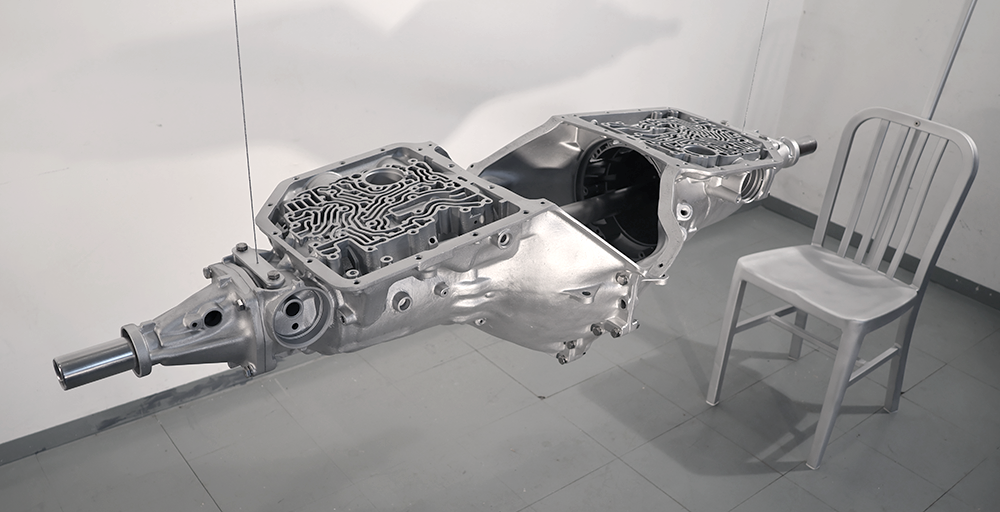Transmission
aluminum
66.5" x 116" x 20"
2025
Transmission is one of the most fundamental characteristics of human and non-human communication; the word can refer to any sort of information passing between any variety of entities.
The work began 25 years ago with the serendipitous find of two identical cast-alloy automotive transmission bell-housings in a junk yard, with their immediately-perceivable high coefficient of strangeness. Matching bolt patterns allowed them to be fastened together face-to-face, creating a single resonant hollow unit.
It wasn't until the onset of the covid pandemic that the literal idea of disease transmission expanded an impulse toward a deeper contextualization of the work, in a way that was more emphatic than the straightforward descriptor suggested. Meanwhile, the unrelenting shock-wave of on-line misinformation, corrupt social mediation and egregious digital miscommunication furthered the concept, now carried through an evocative vessel.




Many trial and error attempts to produce a convincing imagistic relation for the work were not successful. In another junkyard, a pair of knock-off aluminum side-chairs showed up. Modelled on the now hugely-popular Emeco US Navy 1006 chair from 1944, these became the basis for an overarching support-structure for the transmissions. Hanging these upside-down showed the intricate brain- or circuit-board-like allusions of the hydraulic galleries of the bell-housings. An indecipherable complexity of organic purpose was revealed.
All the parts were glass-beaded back to raw aluminum; the owner of the blasting yard immediately identified the housings as "TH350s, the best 3-speed automatic transmissions GM ever built."
Aircraft cable was used to tension the arc of the structure and hang the transmissions, allowing their slight airy movement. The chairs, six feet apart, let percipients sit facing each other and speak, or think, across, or through, the bright transmissions.
